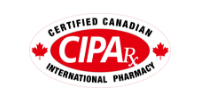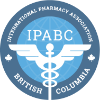Table of contents:
Indications
Niaspan is used to lower LDL cholesterol, triglycerides, and apolipoprotein B, while increasing HDL cholesterol. It is a medication that contains extended-release niacin, also known as nicotinic acid. Niaspan works by reducing the production of LDL and VLDL cholesterol in the liver, and increasing the activity of an enzyme that helps to break down cholesterol.
Niaspan is typically prescribed along with a healthy diet and exercise program. Niaspan is only available with a prescription from a medical professional and should only be taken under their guidance. As with all medications, there may be certain side effects or interactions with other drugs, so it is important to discuss any concerns or questions with a healthcare provider.
Uses and Dosage
Niaspan is an extended-release tablet that is taken orally with a low-fat meal or snack as directed by a healthcare professional, usually at bedtime. Taking niacin on an empty stomach may increase the risk of certain side effects, such as flushing and upset stomach. The tablets should be swallowed whole and not chewed or crushed, to avoid the risk of releasing too much of the drug at once.
Inform the healthcare professional of all other medications being taken, as bile acid-binding resins and other cholesterol-lowering medications may interact with Niaspan. To prevent flushing, patients should avoid alcohol, hot beverages, and spicy foods near the time of taking Niaspan. Taking aspirin or ibuprofen before taking Niaspan may also help prevent flushing, as advised by a healthcare professional.
Patients should continue to take Niaspan regularly, at the same time each day, even if they feel well, and should not stop taking it without consulting a healthcare professional. If a patient stops taking Niaspan, they may need to return to their original dose and gradually increase it again.
Side Effects
Common Side Effects of Niaspan (Niacin Extended Release):
- Belching
- Diarrhea
- Dry skin
- Gas
- Itching
- Leg cramps
- Mild dizziness
- Muscle pain
- Nausea
- Redness
- Sleep problems (insomnia)
- Sweating or chills
- Tingly feeling under your skin
- Warmth
Serious Side Effects of Niaspan (Niacin Extended Release):
- Abdominal pain
- Headache
- Indigestion
- Nasal inflammation
- Rash
- Sweating
- Vomiting
Form and Strength
Niaspan (Niacin Extended Release) is available in the following forms and strength:
Niacin Extended Release: ER Tablet
- 375 mg
Caution
- Patients with liver or kidney problems should use Niaspan with caution, as it may worsen these conditions.
- Niaspan may interact with other medications, such as blood thinners or diabetes medications, so inform your healthcare provider of all medications you are currently taking.
- High doses of niacin, like those found in Niaspan, may cause flushing or skin irritation, which can be uncomfortable but is generally not harmful.
- Niaspan may cause increases in blood sugar levels, which can be a concern for patients with diabetes. Monitor blood sugar levels closely and adjust diabetes medication doses as needed.
- Niaspan may cause increases in uric acid levels, which can lead to gout in some patients. Patients with a history of gout should use Niaspan with caution and be monitored closely.
- Patients who are pregnant or breastfeeding should talk to their doctor before taking Niaspan, as the risks to the fetus or infant are not well understood.
- Patients who have a history of stomach ulcers or bleeding disorders should use Niaspan with caution, as it may exacerbate these conditions.
- Niaspan may cause dizziness or lightheadedness, especially when standing up suddenly. Patients should use caution when driving or operating heavy machinery until they know how they will react.
- Patients with a history of alcohol abuse or liver disease should use Niaspan with caution, as it may worsen liver function.
- Niaspan may cause changes in vision, including blurred vision or difficulty seeing at night. Patients should report any changes in vision to their healthcare provider.
- Niaspan may increase the risk of muscle pain and weakness or liver damage, especially at high doses. These effects are rare but can be serious. Patients should report any unusual symptoms to their healthcare provider immediately.
Frequently Asked Questions (FAQ)
Is Niaspan safe for pregnant or breastfeeding women?
The risks of using Niaspan during pregnancy or while breastfeeding is not well understood, so talk to a healthcare provider before taking the medication.
Can Niaspan interact with other medications?
Yes, Niaspan may interact with other medications, including blood thinners and diabetes medications. Inform your healthcare provider of all medications you are taking.
How should I take Niaspan?
Niaspan should be taken exactly as prescribed by a medical professional. It is usually taken at bedtime and should be swallowed whole.
Resources
- https://www.rxlist.com/niaspan-drug.htm
- https://www.drugs.com/niaspan.html
- https://dailymed.nlm.nih.gov/dailymed/drugInfo.cfm?setid=ccc64ee7-f581-493b-b8c2-6147a0db197e
- https://www.webmd.com/drugs/2/drug-4467/niaspan-oral/details
- https://www.accessdata.fda.gov/drugsatfda_docs/label/2007/020381s034lbl.pdf
- https://www.rxabbvie.com/pdf/niaspan.pdf
It's important to purchase Niaspan from verified Canadian pharmacy.







REVIEWS